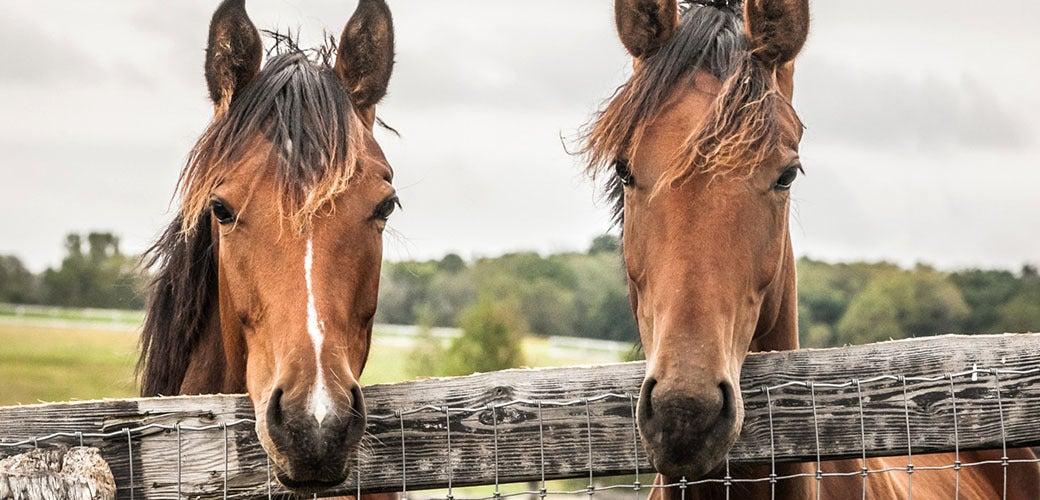What to keep in mind this spring?

As spring arrives, pasture becomes increasingly ready for your horses to graze on. Learn what to keep an eye on to get the most for your horse...
During the winter months and times of bad weather our equine friends are often confined in areas where they cannot access natural forage on a day to day basis. Many owners that have pastures restrict the horse’s access to the pasture in winter to protect the pasture from the damage a horse can inflict. Horses can be destructive on wet pastures, ripping the forage by the roots or causing extensive damage to the sod by churning and forming rivets with their hooves.
But along with the warmer temperatures comes change to your pasture – grass turns to a greener appearance and regains nutritional value for the grazing horse. Early in spring, grasses are striving to grow and must have two to three weeks to develop a length of stem that will assist growth in the following growing season. Horses should not graze on these early plants until the grass is at least 10-16cm in height.
The Benefits
Problems can occur when horses switch to a diet of green grasses as spring arrives:
- Our equine friends are grazing animals and seek to obtain nutrients and fibre that they need by eating natural pasture forage
- A healthy, well-maintained pasture may provide all the necessary forage a horse needs in its diet
- The challenge for us owners is then to control the amount of green grass consumption when returning our horses to grazing
- When the horse’s metabolism is not accustomed to the lush forage, dramatic digestive system issues can occur.
Those Sensitive Tummies…
The horse’s digestive system does not adjust to changes rapidly or easily. Horses that tend to be fed randomly in the amount or type of feed tend to develop problems that can lead to colic or founder – something we’d all rather avoid!
For example, a horse not used to eating apples could develop colic if they then consume an entire bag of apples. Innocent or inexperienced owners might think they are giving their friend a treat when they feed them large amounts of carrots or apples, or throw the fresh lawn clippings over the fence for the horse to chomp on; however, they actually could be causing a harmful chain reaction.
Slow & Steady Wins
One method of gradually introducing your horse to grass is to begin with small controlled periods of grazing of about 15 minutes per day for a few days. Then, increase this time an additional 10 minutes each day until your horse has adjusted to a three or four hour period of grazing.
Then, maintain this four-hour grazing period for a two-week period before giving the hose full turnout on the pasture. This will help your horse’s digestive system to handle the fresh grass with less chance of any negative side effects. Remember that even with careful management, digestive upset can occur.
Ongoing Pointers
- Throughout the growing season, manage pasture growth by allowing grasses to reach at least a 15cm height before allowing grazing.
- Dividing up paddocks allows for rotational grazing and allows each paddock to have a rest period.
- Remove horses from paddocks when grass height is less than 10cm high and move them to new pasture.
- Grass needs approximately 21 days to regain its height.
- Since horses grass sporadically often parts of your paddocks may have uneven grass heights. Mowing consistently during the growing season will assist in maintaining a desirable grass height and discourage weed growth and reproduction.
- Do not mow below 15cm.
So there you have it, some quick & easy tips on what to keep in mind when you’re turning your equine friends out to lush green grass this spring.

